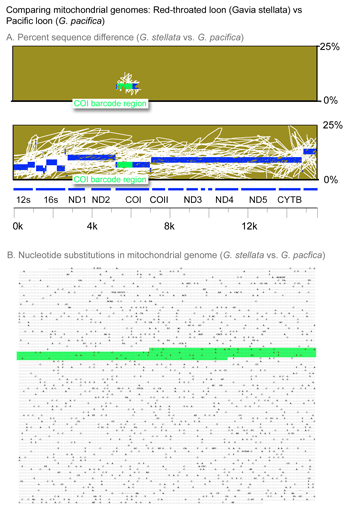Part stands for the whole
A synecdoche is a figure of speech in which a part stands for the whole, or the whole stands for a part. Taking the first, we might consider a DNA barcode as a synecdoche, in which the short barcode gene fragment stands for whole genome. As in the figure, a COI barcode usually encapsulates the differences found elsewhere in the mitochondrial genome. Because COI barcodes generally capture the discontinuities we recognize as species, we can surmise that differences in this short mitochondrial gene fragment usually reflect differences in the nuclear genome. More study of variation within and among species will help understand why differences in mitochondrial and nuclear genomes appear inextricably linked.

for larger version click here
This entry was posted on Sunday, August 5th, 2007 at 4:59 pm and is filed under General. You can follow any responses to this entry through the RSS 2.0 feed. Both comments and pings are currently closed.